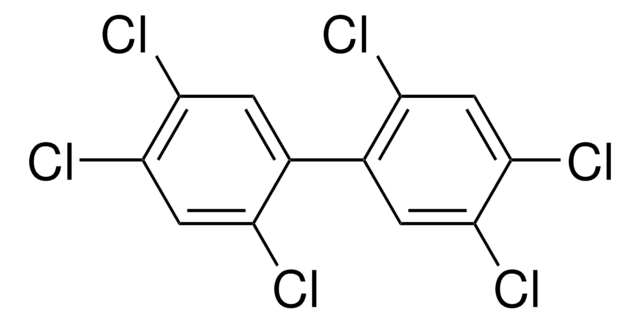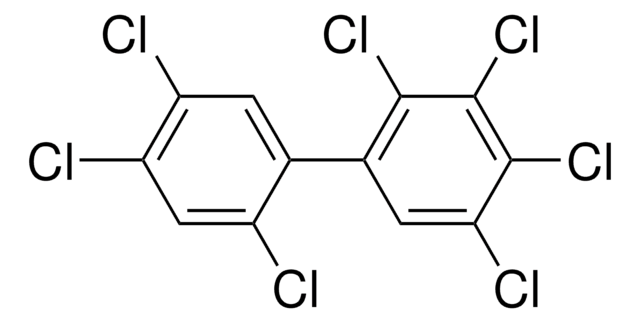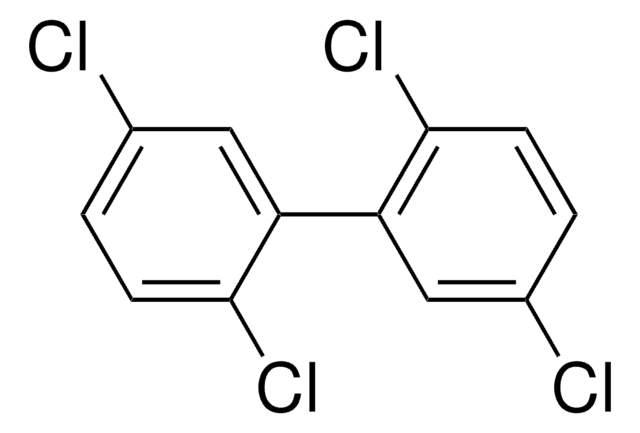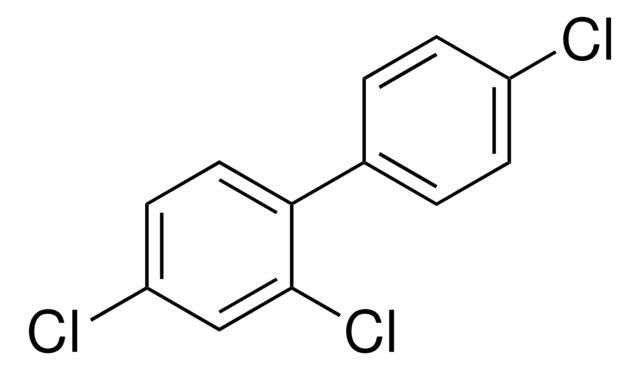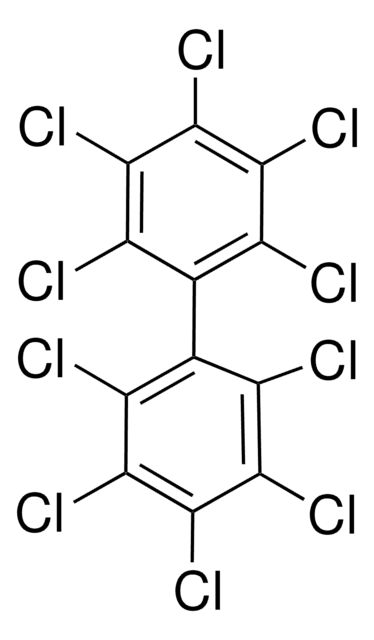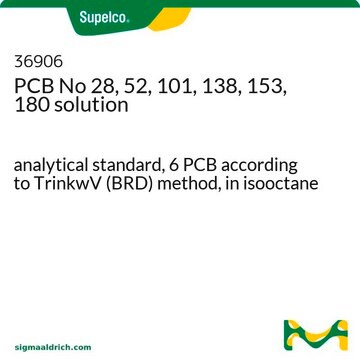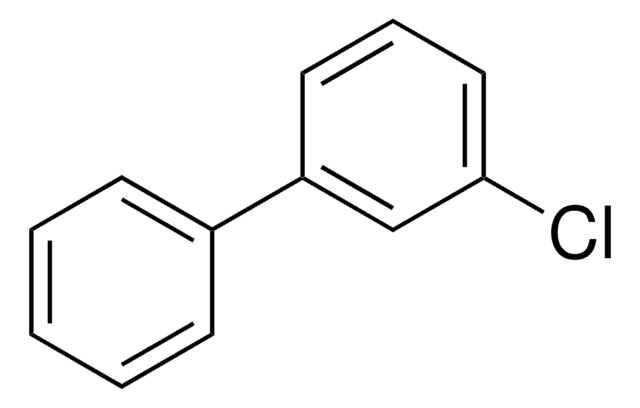35494
PCB No 138
analytical standard
Synonym(s):
2,2′,3,4,4′,5′-Hexachlorobiphenyl, 2,2′,3,4,4′,5′-PCB
About This Item
Recommended Products
grade
analytical standard
Quality Level
shelf life
limited shelf life, expiry date on the label
technique(s)
HPLC: suitable
gas chromatography (GC): suitable
application(s)
environmental
format
neat
SMILES string
Clc1ccc(c(Cl)c1Cl)-c2cc(Cl)c(Cl)cc2Cl
InChI
1S/C12H4Cl6/c13-7-2-1-5(11(17)12(7)18)6-3-9(15)10(16)4-8(6)14/h1-4H
InChI key
RPUMZMSNLZHIGZ-UHFFFAOYSA-N
Looking for similar products? Visit Product Comparison Guide
Application
signalword
Warning
hcodes
Hazard Classifications
Aquatic Acute 1 - Aquatic Chronic 1 - STOT RE 2
Storage Class
11 - Combustible Solids
wgk_germany
WGK 3
flash_point_f
>212.0 °F
flash_point_c
> 100 °C
ppe
dust mask type N95 (US), Eyeshields, Gloves
Choose from one of the most recent versions:
Already Own This Product?
Find documentation for the products that you have recently purchased in the Document Library.
Our team of scientists has experience in all areas of research including Life Science, Material Science, Chemical Synthesis, Chromatography, Analytical and many others.
Contact Technical Service